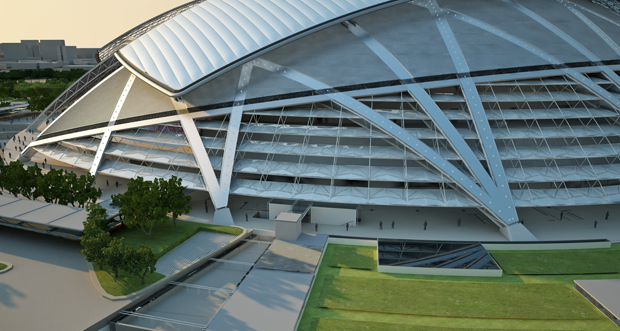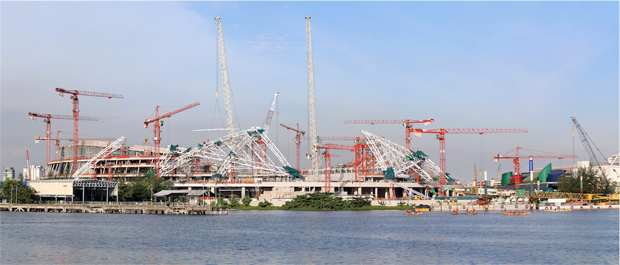
World's largest dome built in Singapore
With it's moveable domed roof Arup's National Stadium resembles an old school Bond villain's lair
Arup may be best known as engineers but the company likes nothing more than to design oustanding buildings as well. The latest - a new $1.33bn, 55,000-seater national stadium in Singapore, the replacement for the 37-year-old existing structure - resembles the futuristic lair of a Bond villain. And being both the engineers and architects they’ve come up with a technical feat - the largest dome in the world. And it will be movable.
Of course, even national stadia have to be able to multi-task these days. This is described as a sports, entertainment and lifestyle hub, as well as venue of the National Day Parade. Arup is no stranger to massive sports venues. It's already worked on the Beijing National Stadium (better known as Herzog & de Meuron’s Bird’s Nest), the Allianz Arena (also by H&dM), and the City of Manchester Stadium, another Arup design.

As for the movable roof, its lightweight design is intended to provide shade and deliver cooled air to the spectators. The simple geometric form of the ultra-thin, retractable dome spans 310m and is designed to use only a fraction of the energy required for an equivalent fully enclosed stadium. In order to maximise energy efficiency in the tropical climate of Singapore, Arup prioritised shading to seating, insulation to roof cladding and giant louvers that reduced solar heat gain. The additional energy required to switch on the bowl cooling for an event will be offset by energy harnessed throughout the year from a large array of photo voltaic panels, allowing the bowl's cooling operation to have a zero carbon impact.
Arup’s Clive Lewis says: “We designed the stadium as an elegant dome spanning 312m – that’s close to four A380 airplanes parked wing to wing. Not only is it wide, the ultra-thin shell roof structure is also very efficient and uses minimum materials for construction.”
The stadium is due to be ready in 2014 and will be the only stadium in the world custom-built to host football, rugby, cricket and athletic events in one venue. If you like this kind of futuristic architecture take a look at the travel edition of the Phaidon Atlas of 21st Century World Architecture - perfect to browse through during those moments when the game lags a bit.